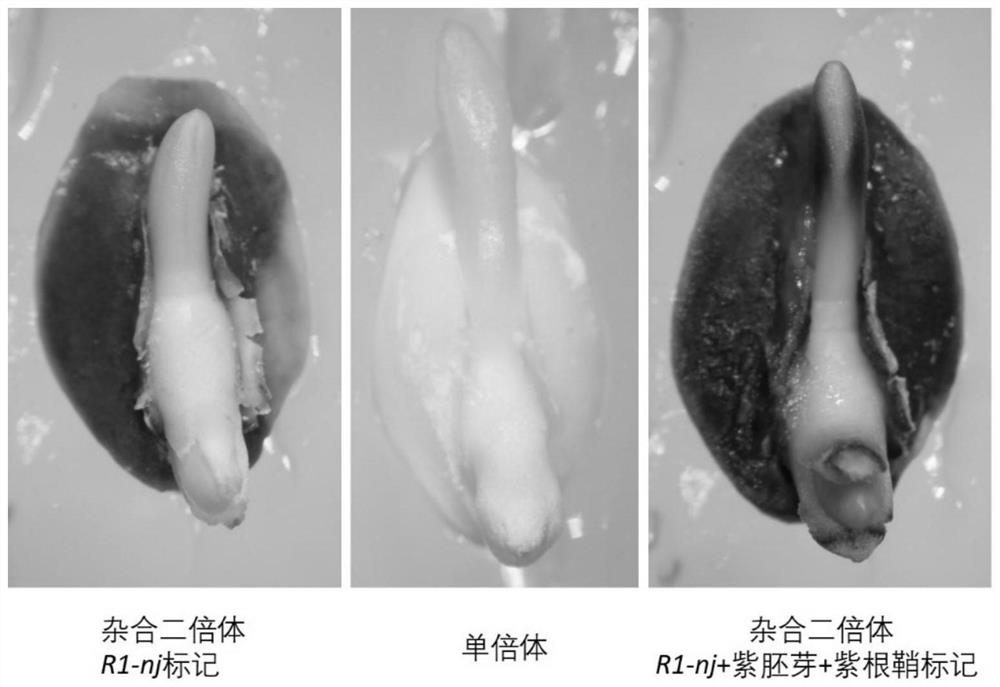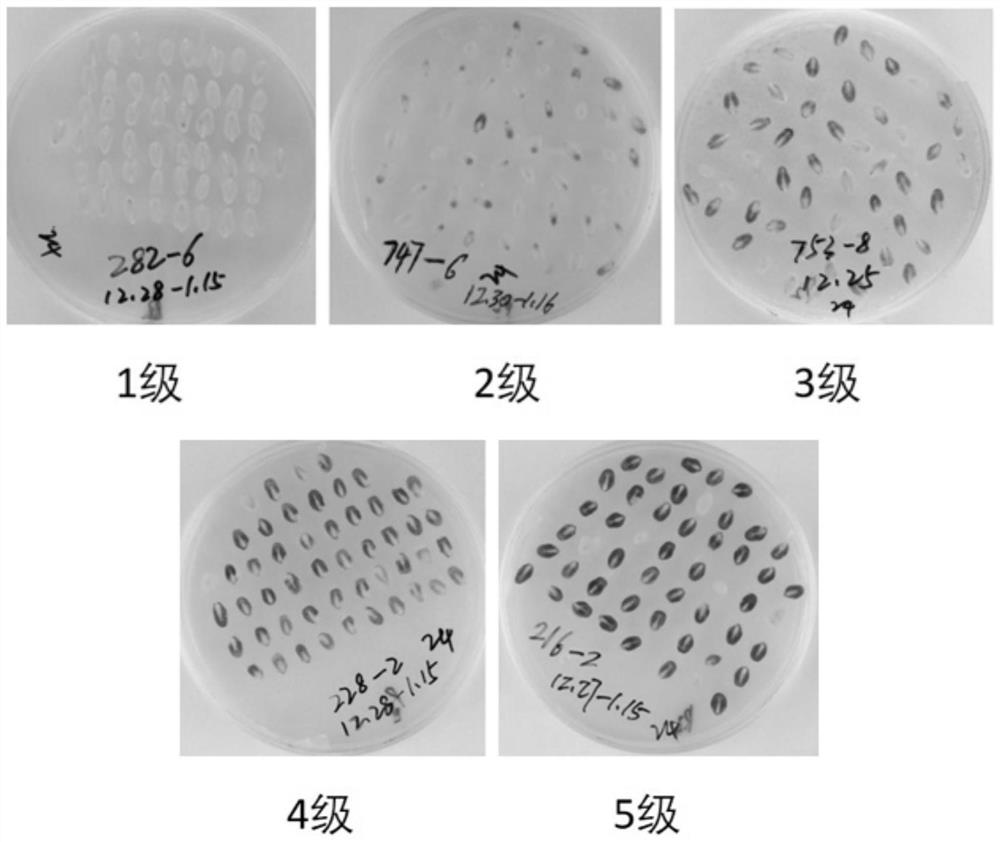A method for efficiently identifying induced lines of maize haploid immature embryos
A haploid induction line, haploid immature embryo technology, applied in the fields of botanical equipment and methods, biochemical equipment and methods, microbial assay/inspection, etc., can solve the problems that limit the identification and doubling of haploid tissue culture. Efficiency, large differences in induced lines, etc., achieve the effects of important application value, short breeding cycle, and delayed powder dispersion time.
- Summary
- Abstract
- Description
- Claims
- Application Information
AI Technical Summary
Problems solved by technology
Method used
Image
Examples
Embodiment 1
[0083] Example 1. Breeding and application of an induction line for efficient identification of maize haploid immature embryos
[0084] 1. Breeding of induction lines for efficient identification of maize haploid immature embryos
[0085] Schematic diagram of breeding induced lines for efficient identification of maize haploid immature embryos image 3 .
[0086] 1. In the spring of 2015, the maize haploid induction line (CAU3 or CAU5) was used as the male parent and S23 was used as the female parent to obtain hybrid F1.
[0087] The hybridization method is: field planting (experimental site is Beijing) maize haploid induction line (as the male parent) and S23 (as the female parent), and before the filaments of the female parent are spit out, they are subjected to emasculation and ear bagging; After the filaments are spit out, cut the filaments and pollinate.
[0088] 2. In the winter of 2015, hybrid F1 was planted in the field (the experimental site was Hainan), and backcr...
PUM
 Login to View More
Login to View More Abstract
Description
Claims
Application Information
 Login to View More
Login to View More - R&D
- Intellectual Property
- Life Sciences
- Materials
- Tech Scout
- Unparalleled Data Quality
- Higher Quality Content
- 60% Fewer Hallucinations
Browse by: Latest US Patents, China's latest patents, Technical Efficacy Thesaurus, Application Domain, Technology Topic, Popular Technical Reports.
© 2025 PatSnap. All rights reserved.Legal|Privacy policy|Modern Slavery Act Transparency Statement|Sitemap|About US| Contact US: help@patsnap.com



